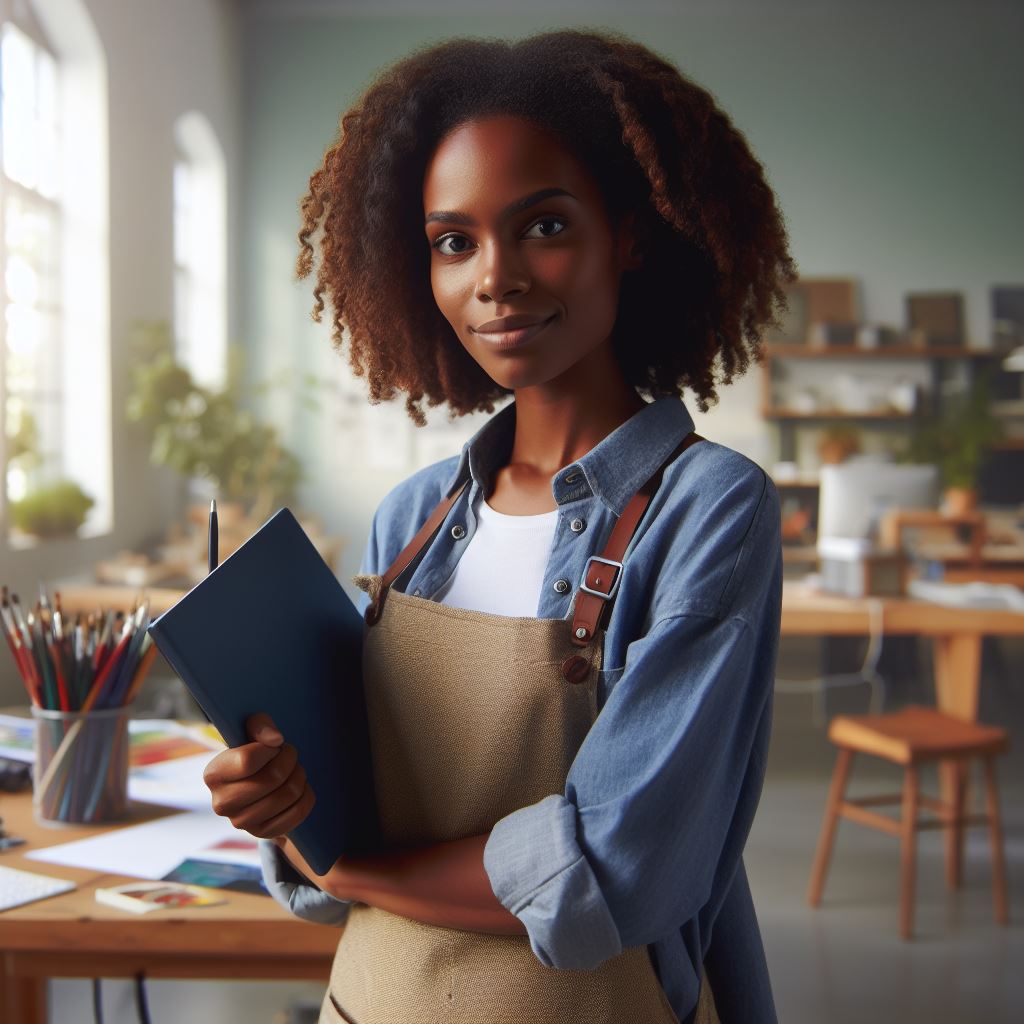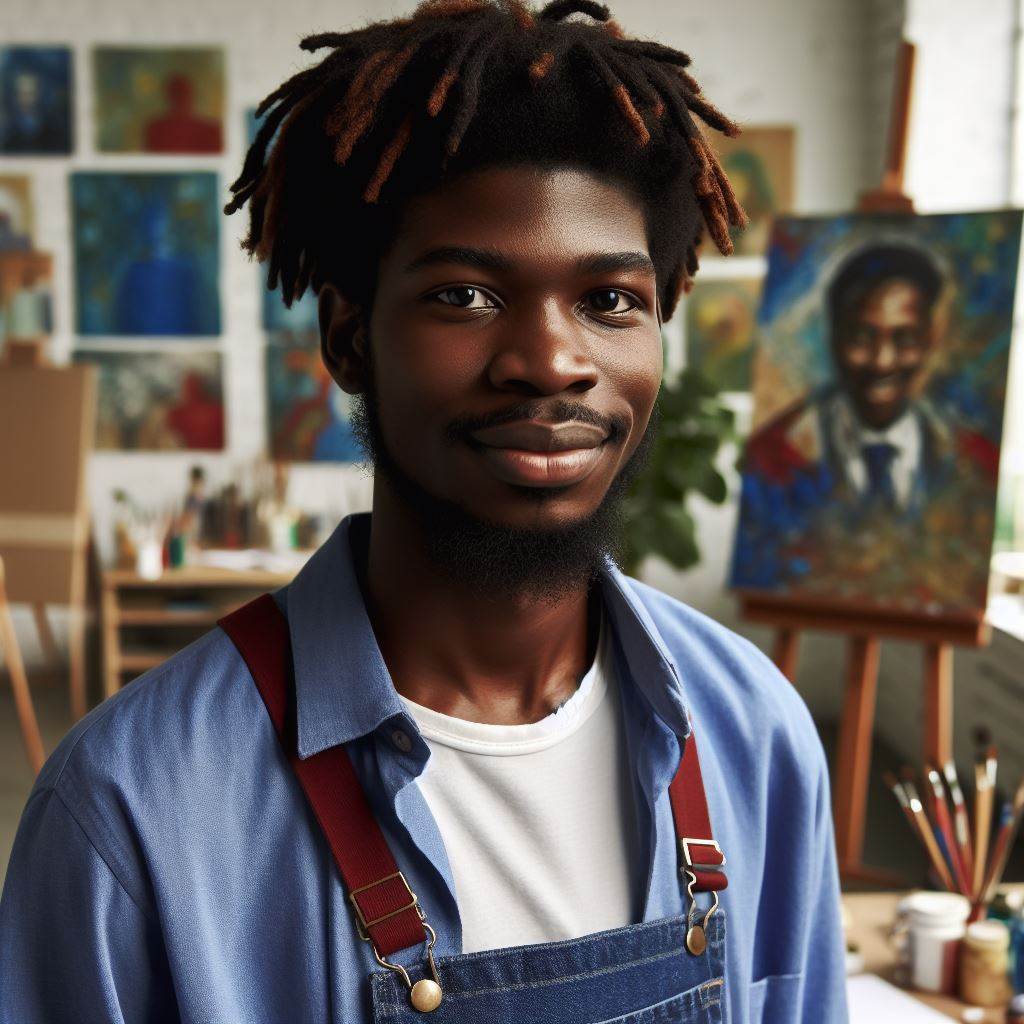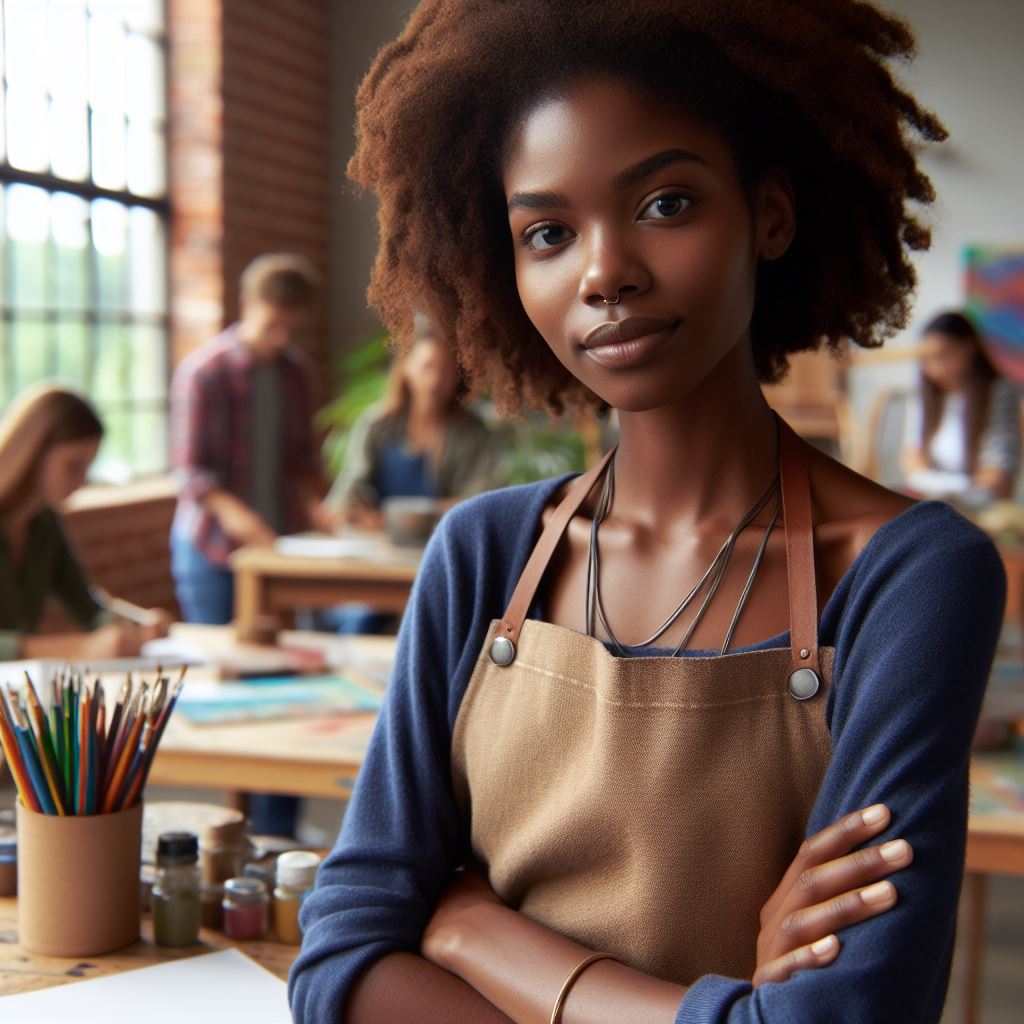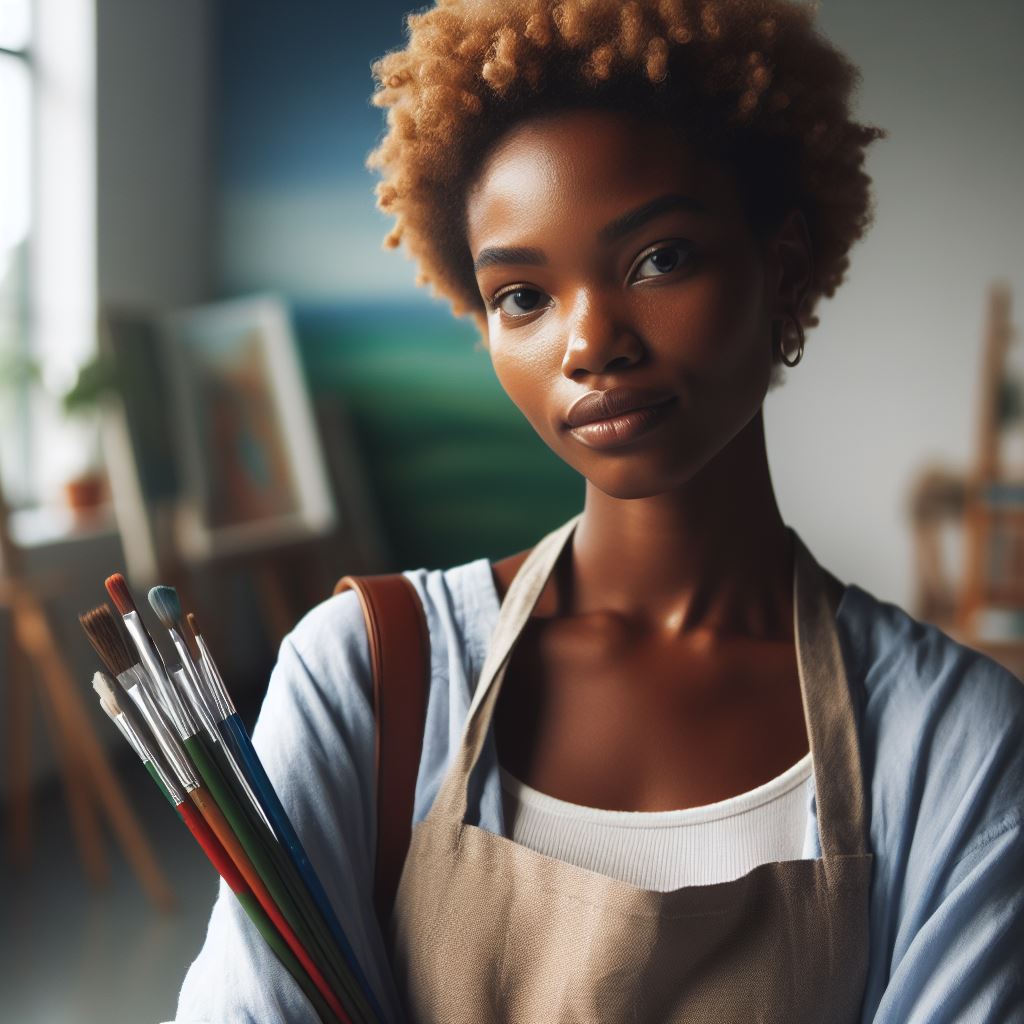Introduction
Traditional art forms in Nigerian culture hold significant meaning and play a vital role in preserving the heritage of various ethnic groups.
Each ethnic group in Nigeria has unique art forms that reflect their history, beliefs, and customs.
Some of the diverse art forms found in Nigeria include pottery, sculpture, beadwork, weaving, and metalwork.
These art forms are not just decorative but also serve functional and symbolic purposes in Nigerian society.
Traditional Nigerian art forms are a way of passing down cultural knowledge from one generation to the next.
They are also a form of visual communication, telling stories and conveying important messages.
Through these art forms, Nigerian communities maintain their unique cultural identities and traditions.
Artists ensure traditions thrive, passing them to future generations, playing a crucial role in preservation.
Nigerian heritage arts, renowned globally for beauty and craftsmanship, actively shape the national identity.
They showcase the rich cultural heritage of Nigeria and serve as a source of pride for its people.
Characteristics of Nigerian Traditional Art Forms
When it comes to Nigerian traditional art forms, there are several key characteristics that set them apart from other art forms around the world.
Materials and Techniques Used
Nigerian traditional art forms often utilize locally sourced materials such as wood, clay, beads, and textiles.
Artisans employ techniques like carving, weaving, and painting to create intricate designs.
Symbolism and Meanings
Nigeria’s rich cultural heritage infuses deep symbolism and meaning into its heritage arts. These meanings are carried through generations.
For example, geometric patterns may represent unity, while certain colors signify specific emotions or concepts.
Importance of Storytelling
Nigerian traditional art forms rely on storytelling to pass historical narratives, myths, and folk tales through generations.
These stories help preserve the country’s diverse cultural traditions.
By exploring the characteristics of Nigerian traditional art forms, we gain a deeper appreciation for the craftsmanship, symbolism, and cultural significance embedded in these unique works of art.
Read: Digital Art Trends in the Nigerian Art Scene
Types of Nigerian Traditional Art Forms
Sculpture: Wood carving, bronze casting, and terracotta figures
Nigerian traditional sculpture includes wood carving, bronze casting, and terracotta figures.
Wood carving is one of the oldest forms of sculpture in Nigeria, with artisans creating intricate designs and patterns on wood surfaces.
Bronze casting is another popular form of sculpture, with artisans using the lost-wax casting technique to create beautiful and detailed bronze sculptures.
Terracotta figures are also a prominent feature of Nigerian traditional art, with artists molding clay into various shapes and forms to create stunning figurines.
Textiles: Adire (tie-dye), Aso-oke (handwoven cloth), and embroidered fabrics
The Nigerian traditional textiles encompass Adire (tie-dye), Aso-oke (handwoven cloth), and embroidered fabrics.
Adire, a traditional Nigerian tie-dye textile, involves using indigo dye to create unique patterns and designs on fabric, reflecting the rich cultural heritage of Nigeria.
Aso-oke, a handwoven cloth, adorns special occasions and ceremonies in Nigeria, displaying intricate weaving techniques and vibrant colors.
Colorful threadwork and intricate designs adorn embroidered fabrics in Nigeria, elevating traditional attire elegantly.
Beadwork: Jewelry, decorative items, and traditional attire embellishments
Beadwork in Nigeria is used to create jewelry, decorative items, and traditional attire embellishments.
It plays a crucial role in Nigerian culture, with artisans creating elaborate jewelry pieces, decorative items, and embellishments for traditional attire using colorful beads.
These art forms are not just objects of beauty but also serve as a means of communication, storytelling, and preserving the cultural heritage of Nigeria.
Nigeria’s cultural heritage is deeply rooted in its history and traditions, with significant roles played by these art forms.
Nigerian artisans pass down unique styles and techniques through generations, showcasing their skill and craftsmanship.
Overall, Nigerian heritage arts are a testament to the rich history, diverse culture, and artistic talent of the Nigerian people, showcasing their creativity and passion for art.
Read: Funding Opportunities for Nigerian Visual Artists
Regional Influence on Nigerian Traditional Art Forms
When it comes to Nigerian traditional art forms, regional influence plays a significant role in shaping the distinct styles and techniques found in different parts of the country.
The geographical diversity of Nigeria has led to a wide range of artistic expressions that are unique to each region.
Distinct Styles and Techniques Based on Geographical Regions in Nigeria
One of the key factors that contribute to the diversity of Nigerian heritage arts is the distinct styles and techniques that are based on geographical regions.
Each region in Nigeria has its own cultural identity, which is reflected in the art produced by its people.
The Yoruba people of southwestern Nigeria intricately beadwork and create vibrant textiles.
The Igbo people of southeastern Nigeria craft colorful masks and sculptures famously.
Transform Your Career with Expert Guidance
Get personalized mentorship consulting that’s tailored to your unique path. Our expert advice is actionable and exclusive.
Get StartedIn the northern region of Nigeria, the Hausa people are famous for their intricate leatherwork and embroidery.
Each group’s unique cultural heritage and available resources result in regional differences in styles and techniques.
Influence of Trade Routes, Migration, and Intercultural Interactions on Art Forms
Another factor that has influenced Nigerian traditional art forms is the historical trade routes, migration patterns, and intercultural interactions that have taken place in the region.
These exchanges have led to the cross-pollination of artistic ideas and techniques, resulting in a rich tapestry of artistic expression.
Trans-Saharan trade routes brought Islamic influences to northern Nigeria. Hausa artwork showcases intricate patterns and calligraphy.
The trade with European colonial powers also introduced new materials and techniques to Nigerian artists, influencing the development of new art forms.
People’s movement within and across Nigeria’s borders blends artistic traditions from various ethnic groups.
This blending creates hybrid art forms. These unique forms are specific to certain regions or communities.
Examples of Famous Traditional Art Pieces from Different Regions in Nigeria
There are many famous traditional art pieces from different regions in Nigeria that showcase the diversity and beauty of Nigerian art forms.
The Edo people of southern Nigeria crafted intricate metal plaques known as the Benin Bronze plaques.
These bronze plaques, masterpieces of African art, depict scenes from the history and culture of the Edo kingdom.
Around 500 BC, artisans in central Nigeria crafted the Nok terracotta figures, ancient clay sculptures.
The Ife bronze heads, created by the Yoruba people of southwestern Nigeria, are also well-known examples of Nigerian traditional art.
These bronze heads are highly realistic and are believed to represent royalty or deities in Yoruba culture.
Overall, the regional influence on Nigerian heritage arts has led to a rich and diverse artistic heritage that continues to inspire artists and art lovers both within Nigeria and around the world.
Read: Impact of Nigerian Art on Global Culture

Gain More Insights: Teaching History & Strategic Studies in Nigerian Schools
Evolution and Modernization of Nigerian Traditional Art Forms
Evolving and Modernizing Nigerian Traditional Art Forms
Impact of Colonization, Globalization, and Digital Technology
Throughout history, Nigerian heritage arts have undergone significant changes due to external influences.
Colonization brought about the introduction of Western art styles and techniques.
Globalization opened up opportunities for Nigerian artists to showcase their work on a global stage.
Digital technology has revolutionized the way traditional art forms are created and shared.
Contemporary Artists Blending Traditional Techniques with Modern Themes
In recent years, there has been a resurgence of interest in traditional Nigerian art forms among contemporary artists.
Many artists are incorporating traditional techniques such as beadwork and carving into their modern pieces.
By blending traditional elements with modern themes, these artists are creating unique and culturally significant works.
This fusion of old and new has helped to preserve traditional art forms while making them relevant to today’s audience.
Efforts to Preserve and Promote Traditional Art Forms
Efforts actively promote Nigeria’s rich cultural heritage by preserving heritage arts.
Educational programs are being implemented to teach younger generations about traditional art techniques.
Exhibitions and galleries showcasing Nigerian traditional art help to raise awareness and appreciation for these art forms.
By supporting and promoting traditional artists, initiatives are ensuring that Nigerian art forms continue to thrive.
Colonization, globalization, and digital tech shaped Nigerian traditional art’s evolution and modernization.
Contemporary artists blend traditional techniques with modern themes to create unique works.
Efforts to preserve and promote heritage arts keep Nigeria’s cultural heritage alive.
Read: Exploring Nigerian Art Galleries and Museums
Discover More: Career Opportunities for Foreign Language Graduates
Gain More Insights: Future of Criminology & Security Studies in Nigeria
Cultural Significance and Value of Nigerian Traditional Art Forms
Traditional art forms in Nigeria play a crucial role in preserving cultural heritage and identity.
Let’s explore the cultural significance and value of Nigerian traditional art forms:
Role of Art in Social Rituals, Ceremonies, and Everyday Life
- Art is deeply intertwined with social rituals and ceremonies in Nigerian communities.
- Traditional art forms are used to mark important life events such as births, weddings, and funerals.
- Art serves as a means of communication, storytelling, and cultural expression in everyday life.
- It is a way for communities to connect with their history, beliefs, and values.
Celebration of Heritage, Ancestry, and Cultural Identity
Nigerian heritage arts celebrate the rich heritage and ancestry of different ethnic groups.
These art forms showcase traditional practices, beliefs, and customs passed down through generations.
They serve as a visual representation of cultural identity, fostering a sense of pride and belonging among community members.
Artists often draw inspiration from folklore, myths, and legends to create pieces that honor their cultural roots.
Economic Impact of Traditional Art on Local Communities and National Tourism Industry
- Traditional art has a significant economic impact on local communities in Nigeria.
- Artists and craftsmen rely on their skills to earn a living and support their families.
- The vibrant art market in Nigeria attracts tourists from around the world, boosting the country’s tourism industry.
- Art festivals, exhibitions, and workshops centered around traditional art forms contribute to the economy and cultural exchange.
In general, Nigerian heritage arts hold immense cultural significance and value.
They serve as a link to the past, a reflection of the present, and a bridge to the future.
Through art, Nigerians celebrate their heritage, preserve their identity, and contribute to the economic growth of their communities.
Gain More Insights: Impact of History & Strategic Studies on Nigerian Society
Conclusion: Appreciating and Preserving Nigerian Traditional Art Forms
The importance of understanding and respecting traditional art forms in Nigerian culture cannot be overstated.
These art forms hold significant historical, cultural, and spiritual value for the Nigerian people.
Supporting and promoting traditional artists and artisans in Nigeria is essential for the preservation of these unique art forms.
This can be done by purchasing their works, attending exhibitions, and spreading awareness about their craft.
As individuals, we have a responsibility to learn more about Nigerian traditional art forms and contribute to their preservation and recognition as valuable cultural assets.
Studying and appreciating these art forms honors Nigerian heritage and passes down traditions to future generations.




